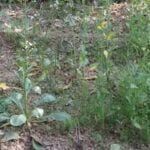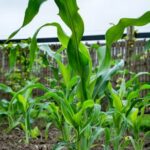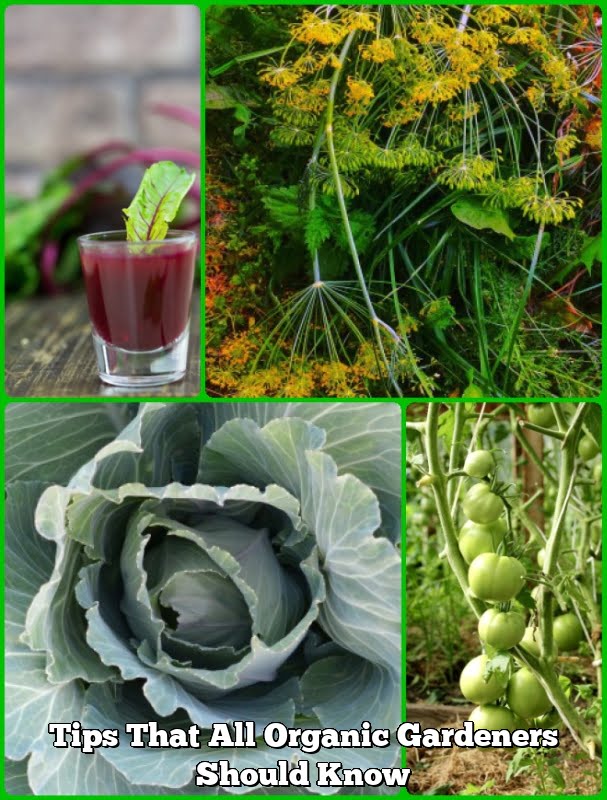Introducing children to a variety of vegetables at a young age can have a lasting impact on their eating habits and overall health. According to recent studies, first-grade gardeners are more likely to taste and enjoy vegetables, highlighting the significant role that gardening can play in promoting healthy eating habits among young children.
In this article, we will explore the importance of exposing children to vegetables at an early age and how engaging in gardening activities can positively influence their willingness to try new foods.
Gardening offers a range of benefits for first-grade students, from learning about the natural world and sustainability to hands-on learning experiences and taking responsibility for caring for plants. These benefits not only contribute to the overall development of children but also play a crucial role in shaping their attitudes towards food.
The act of growing their own vegetables can make children more inclined to taste and appreciate them, laying a strong foundation for healthy eating habits in the future.
Through real-life case studies, we will delve into the connection between gardening and tasting vegetables, showcasing how first-grade students who engage in gardening activities are more open to trying different types of vegetables. By sharing these examples, we aim to highlight the positive impact that gardening can have on children’s attitudes towards healthy eating and encourage more schools and parents to consider integrating gardening initiatives into education programs.
Benefits of Gardening for First-Grade Students
Gardening offers a multitude of benefits for first-grade students, from learning about the natural world to developing a sense of responsibility. Engaging in gardening activities at a young age can help children develop a deeper connection to nature and a greater understanding of where their food comes from. Through hands-on learning experiences, first-grade gardeners can gain valuable knowledge about plant life cycles, pollination, and the importance of soil and water for plant growth.
Learning About the Natural World
First-grade students who participate in gardening activities have the opportunity to learn firsthand about the natural world. They can observe the growth of plants, the interactions between plants and insects, and the changes that occur throughout each season. This exposure to nature fosters an appreciation for the environment and encourages children to become good stewards of the earth.
Hands-on Learning
Gardening provides first-grade students with hands-on learning experiences that engage their senses and stimulate their curiosity. From planting seeds to caring for growing plants, children can actively participate in every stage of the gardening process. This tactile approach to learning helps students understand abstract concepts such as growth and change in a concrete and meaningful way.
Developing Responsibility
Taking care of a garden instills a sense of responsibility in first-grade students as they learn to care for living organisms. By watering, weeding, and tending to plants, children understand the impact of their actions on the well-being of their garden. This sense of responsibility carries over into other aspects of their lives, teaching them important life skills that will benefit them as they grow older.
Engaging in gardening activities at a young age not only provides educational value but also promotes healthy eating habits and an appreciation for fresh fruits and vegetables. As first-graders explore their school gardens, they are more likely to feel connected to the food they grow and subsequently more inclined to taste vegetables they have nurtured themselves. This connection between gardening and tasting vegetables is crucial in fostering positive relationships with healthy foods among young children.
The Connection Between Gardening and Tasting Vegetables
Exposing children to vegetables at a young age is crucial for developing healthy eating habits. Research has shown that first-grade gardeners are more likely to taste and enjoy vegetables compared to their peers who do not participate in gardening activities. This connection between gardening and tasting vegetables is an important factor to consider when promoting healthier diets for children.
There are several reasons why first-grade students who engage in gardening are more inclined to taste and enjoy vegetables. Firstly, the hands-on experience of planting, caring for, and harvesting vegetables fosters a sense of ownership and pride in the produce they have nurtured.
This sense of accomplishment can make them more open to trying the fruits of their labor. Additionally, being actively involved in the growing process can instill a curiosity and appreciation for where food comes from, making them more willing to explore different types of produce.
As educators and parents, it is essential to leverage this connection between gardening and tasting vegetables to encourage positive eating behaviors in children. By providing opportunities for first-grade students to participate in gardening activities, we can help them develop a positive relationship with food and cultivate healthy eating habits that will benefit them throughout their lives.
- Gardening allows first-grade students to witness the natural growth process firsthand
- Children develop a sense of responsibility by caring for plants
- Exposure to a variety of vegetables through gardening encourages curiosity and exploration
Ultimately, the act of growing vegetables can make children more likely to taste and enjoy them, leading to greater acceptance of nutritious foods into their diets. Through school gardening programs and engaging activities, educators and parents have the opportunity to introduce young children to a world of fresh produce while nurturing healthy attitudes towards food.
Case Studies
In a study conducted by the University of Florida, it was found that children who participated in gardening activities during their first-grade year were more likely to taste and enjoy different types of vegetables compared to those who did not have exposure to gardening at school. One such example is Tommy, a first-grader who initially had an aversion to vegetables but, after growing carrots and tomatoes in the school garden, became curious about tasting them.
This experience not only broadened his palette but also instilled a sense of pride and accomplishment in him.
Another case study involves Megan, a first-grade student with a limited interest in healthy foods. Through her participation in the school’s gardening program, she learned how to plant and care for various vegetables such as lettuce and green beans. As a result, she developed a newfound enthusiasm for trying the vegetables she helped grow. Megan’s story highlights the transformative power of hands-on learning experiences like gardening for young children.
A third example is Alex, who was initially hesitant to try new vegetables due to unfamiliarity. However, after engaging in planting and harvesting activities as part of his first-grade curriculum, he became more open to trying different types of vegetables. His increased willingness to taste these foods directly correlated with his involvement in the school’s gardening program.
Overall, these case studies demonstrate how first-grade students can benefit from participating in gardening activities at school. The exposure to growing their own produce not only teaches valuable skills but also encourages them to be more open-minded about tasting and enjoying a variety of vegetables.
| Student | Transformation |
|---|---|
| Tommy | Became curious about tasting carrots and tomatoes grown in the garden |
| Megan | Developed enthusiasm for trying lettuce and green beans she helped grow |
| Alex | Became more open to trying different types of vegetables after actively participating in planting and harvesting activities |
Tips for Starting a School Garden
Starting a school garden can be a rewarding experience for both teachers and students. Not only does it provide hands-on learning opportunities, but it also promotes healthy eating habits and a sense of responsibility. When it comes to involving first-grade students in gardening, there are several tips that can help make the process successful:
- Start small: Begin with a small plot of land or even container gardening to introduce students to the basics of gardening without overwhelming them.
- Involve parents: Encourage parents to participate in the planning and maintenance of the school garden. This can create a sense of community and shared responsibility for the garden’s success.
- Make it educational: Integrate the school garden into the curriculum by tying in science, math, and language arts lessons with hands-on activities in the garden.
By following these tips, teachers and parents can create a positive and engaging experience for first-grade students participating in gardening at their school.
In addition to these practical tips, it’s essential to provide guidance on how to choose appropriate plants for the school garden. Selecting vegetables that are easy to grow and appealing to children can increase their likelihood of tasting and enjoying them. Some kid-friendly vegetables to consider include:
- Carrots
- Radishes
- Cherry tomatoes
- Sugar snap peas
- Strawberries
Introducing first-grade students to these types of vegetables through hands-on gardening activities can make them more open to trying new foods while also fostering an appreciation for nature and healthy eating habits.
Ultimately, involving first-grade students in gardening at their school provides valuable learning opportunities and encourages them to develop a positive relationship with vegetables. With careful planning and thoughtful selection of plants, teachers and parents can create an environment where young children are more likely to taste and enjoy the fruits (or rather, vegetables) of their labor.
Gardening Activities for First-Grade Students
Planting Seeds
One of the most exciting activities for first-grade students is planting seeds. This hands-on activity allows children to learn about the life cycle of a plant and see the process of growth firsthand. Encourage students to plant various vegetables, such as carrots, radishes, and lettuce, and discuss with them how these vegetables can be used in cooking.
Caring for Plants
Teaching first-grade students about responsibility can be incorporated into gardening by assigning them tasks to care for the plants. Students can water and weed the garden beds, observe the changes in the plants as they grow, and even journal about their observations. These responsibilities help instill a sense of ownership and pride in the garden.
Harvesting Produce
Once the vegetables are ready to be harvested, allow the first-grade students to pick the produce themselves. Being involved in this process encourages them to take an interest in trying the vegetables they have helped grow. Additionally, incorporating a tasting session where students can sample the fresh produce can further increase their likelihood of trying new vegetables.
By engaging in these fun and educational gardening activities, first-grade students not only learn about the natural world but also develop a deeper appreciation for vegetables and healthy eating. The hands-on experience of growing their own food creates a sense of connection that makes them more likely to taste and enjoy vegetables.
Encouraging Healthy Eating Habits
Many parents and educators understand the importance of exposing young children to a variety of vegetables to establish healthy eating habits early on. Research has shown that first-grade gardeners are more likely to taste and enjoy vegetables, making gardening an effective tool for promoting healthy eating habits among children. By engaging in hands-on gardening activities, first-grade students can develop a positive relationship with food and learn valuable lessons about healthy eating.
Gardening can be a transformative experience for first-grade students, offering numerous benefits beyond just growing vegetables. In addition to learning about the natural world and gaining hands-on experience, children who participate in gardening also develop a sense of responsibility as they care for their plants. These experiences can translate into a greater appreciation for the fruits (and vegetables) of their labor and foster a positive attitude towards healthy foods.
The act of growing vegetables through gardening can significantly increase the likelihood of children tasting and enjoying them. Studies have shown that when children are involved in the process of planting, watering, and harvesting vegetables, they are much more willing to try these foods. This connection between gardening and tasting vegetables highlights the potential impact of incorporating gardening into educational curriculums as a means of encouraging healthy eating habits among first-grade students.
| Benefits of Gardening | Details |
|---|---|
| Learning about the natural world | Gardening provides an opportunity for first-grade students to learn about plant life cycles, ecosystems, and environmental sustainability. |
| Hands-on learning | Children engage in sensory experiences while planting seeds, observing growth patterns, and caring for plants. |
| Responsibility | Students take ownership of their garden plots and learn important lessons about commitment and nurturing living things. |
The positive link between gardening and tasting vegetables presents a compelling case for integrating school gardens into educational settings. Through practical experience with planting and tending to crops, first-grade students not only gain valuable knowledge but also develop an enthusiasm for trying new foods. Therefore, it is essential to recognize the potential impact of gardening on a child’s willingness to explore different types of vegetables at an early age.
Conclusion
In conclusion, exposing first-grade students to vegetable gardening can have a significant impact on their willingness to taste and enjoy vegetables. Studies have shown that children who participate in gardening activities are more likely to try the vegetables they have grown themselves, leading to healthier eating habits and a positive relationship with food.
By starting a school garden or involving first-grade students in gardening activities, educators and parents can provide them with valuable hands-on learning experiences and instill a sense of responsibility for the natural world.
The benefits of gardening for first-grade students go beyond just tasting vegetables. It offers them the opportunity to learn about the natural world, develop important life skills, and foster an appreciation for nature. Additionally, it encourages physical activity and helps improve concentration and focus. By involving children in the process of growing their own food, we can empower them to make healthier choices and develop a deeper understanding of where their food comes from.
As we consider the importance of promoting healthy eating habits among young children, it is clear that gardening can be a powerful tool in achieving this goal. Parents and educators should consider starting or participating in a school gardening program to provide first-grade students with the opportunity to connect with nature, learn essential life skills, and develop a positive attitude towards trying new foods.
By introducing children to vegetable gardening at an early age, we can nurture their curiosity for fresh produce and inspire them to embrace a healthy lifestyle.
Frequently Asked Questions
What Is the Easiest Vegetable Garden for Beginners?
The easiest vegetable garden for beginners is one that includes low-maintenance vegetables such as lettuce, tomatoes, green beans, and radishes. These vegetables are relatively easy to grow and require minimal attention.
How Do You Explain Vegetables to Preschoolers?
When explaining vegetables to preschoolers, it’s important to keep it simple and engaging. Use colorful pictures or actual vegetables to show them the variety of shapes, colors, and sizes. Explain how vegetables help our bodies grow strong and healthy.
What Is the Recommended Fruit Intake for Children?
The recommended fruit intake for children varies by age, but as a general rule, toddlers should have 1 cup of fruit per day, while older children need 1-2 cups. It’s important to offer a variety of fruits to ensure they get different nutrients.

If you’re looking to get into vegetable gardening, or are just looking for some tips on how to make your current garden better, then you’ve come to the right place! My name is Ethel and I have been gardening for years. In this blog, I’m going to share with you some of my best tips on how to create a successful vegetable garden.





